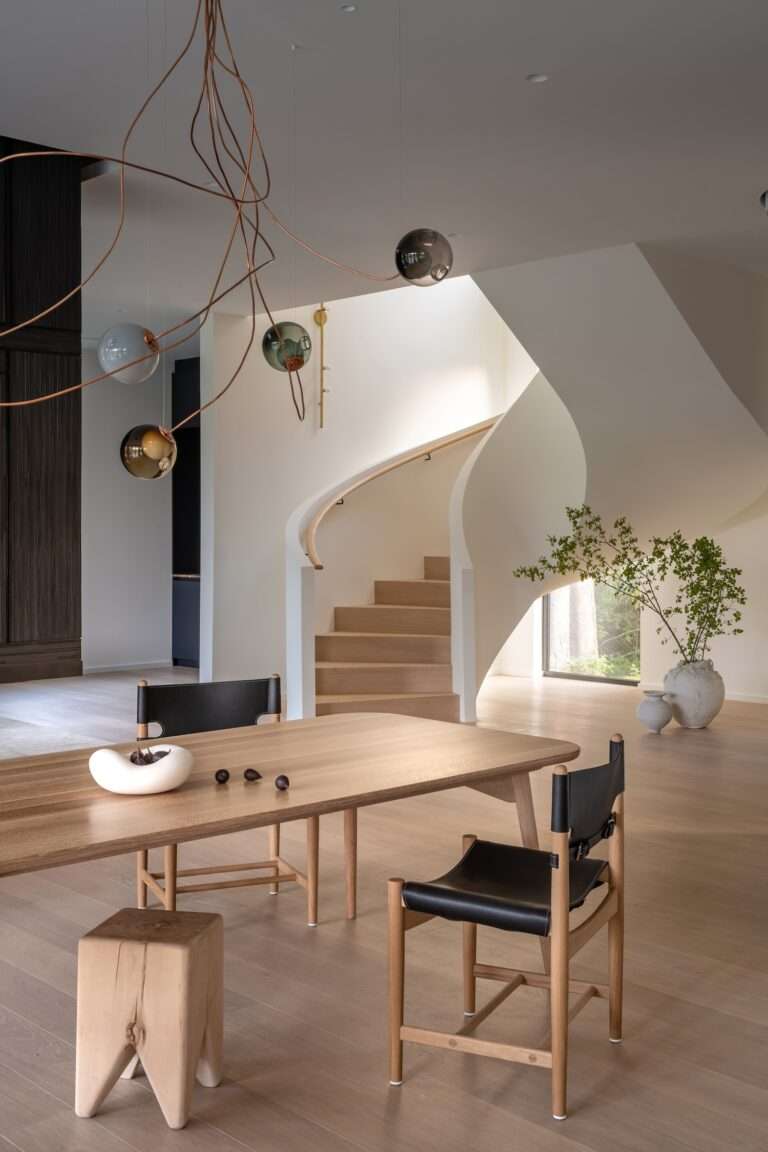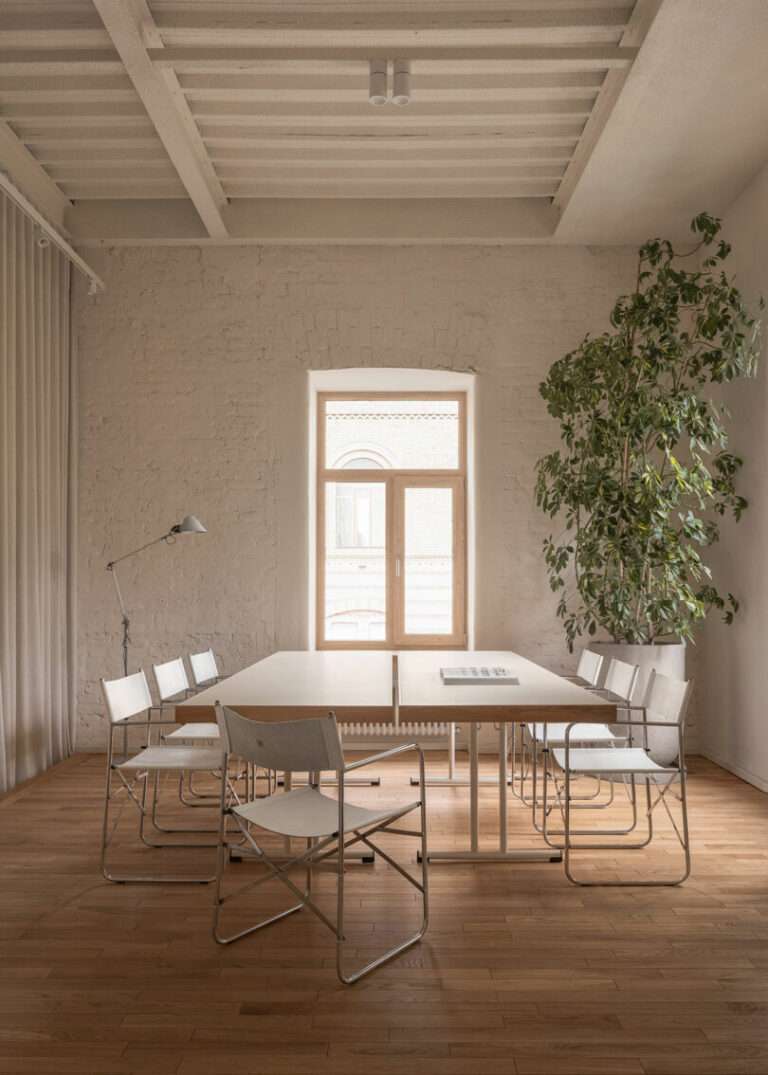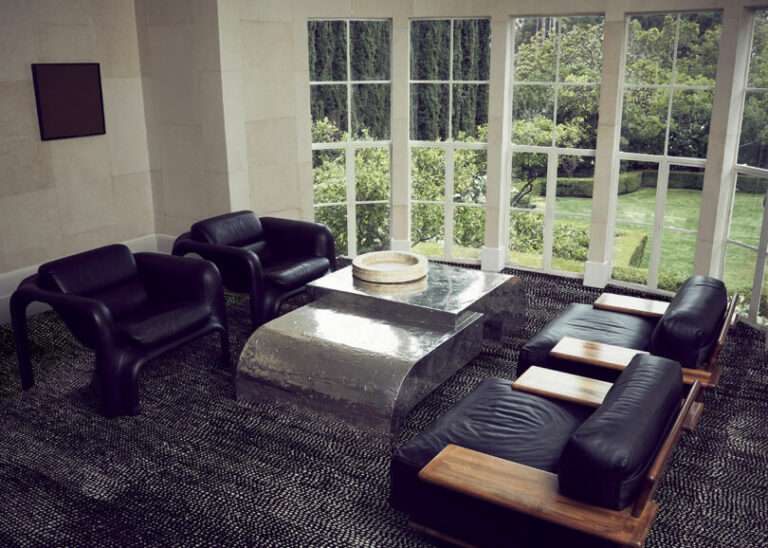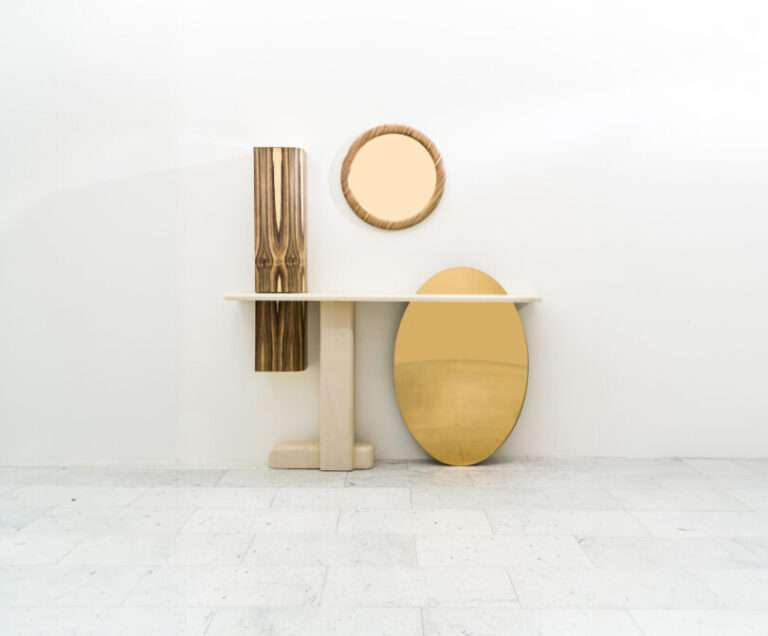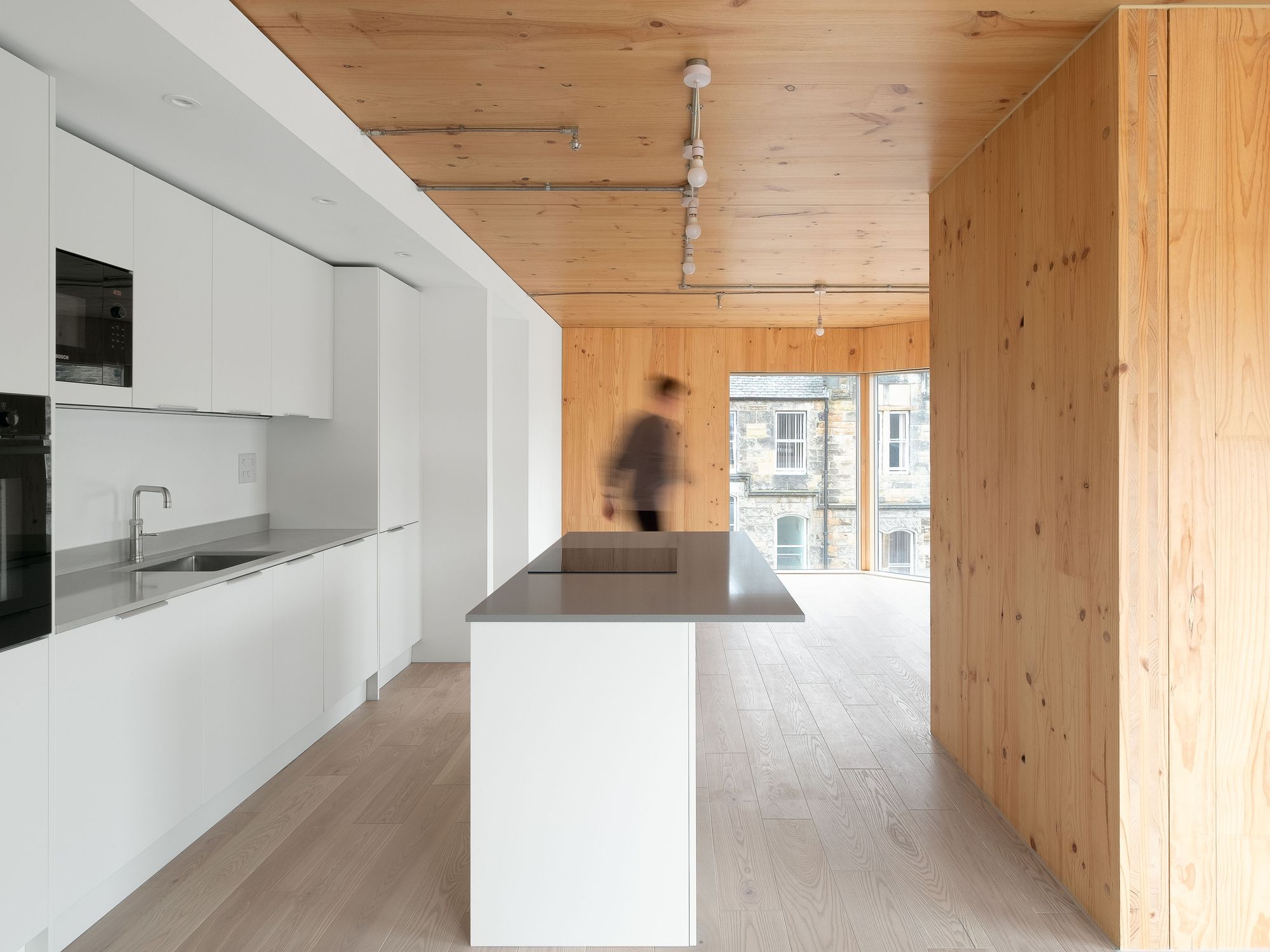
Simon Square is a minimalist residence located in Edinburgh, United Kingdom, designed by Fraser/Livingstone Architects. The structure utilizes timber at its core and is enveloped in a brick shell, with a lime slaister-coat to soften the appearance of the brick and offer a more cohesive and robust appearance. This contemporary design blends large picture windows with chamfered form and lime-slaistered masonry, providing both aesthetic appeal and insulation. The inside also boasts wood fiber insulation and a ventilated cavity to ensure a vapor-open construction. This design takes inspiration from the historic, palatial oriel window tradition of Edinburgh’s New Town, dating back to the 1790s.
These elements, coupled with the craftsmanship of Scottish stonemasons, have enabled the evolution of a dense and social urbanity that recalls the character of medieval Scotland. However, the architect also acknowledges the change in construction methods and materials. Traditional practices and material extraction are no longer sustainable. While the benefits of dense and social cityscapes have been rediscovered, new buildings often appear as pale imitations of their predecessors. Modern approaches that prioritize thin, high-grade timber often introduce challenges, such as vulnerability to rot and the requirement for toxic treatments and polythene wrapping. This can create unhealthy environments and lead to complications such as extensive ventilation requirements. The architect advocates for solid timber as a forward-looking solution.
As a locally-sourced, carbon-locking material, solid timber avoids the health risks associated with conventional timber construction. It is touted for its positive environmental impact, its calming effect on occupants, and its contribution to a sustainable economy. Scotland’s fast-growing softwood supplies offer an opportunity to leverage this material. Innovation in heavy timber tenemental construction in Scotland has been slow. High acoustic control requirements have been a barrier, demanding a 56dB reduction in noise, one of the highest standards in Europe. Despite these challenges, the project has proven the concept for the developer-led market by achieving a 62dB reduction, exceeding the already-stringent Scottish standard.
